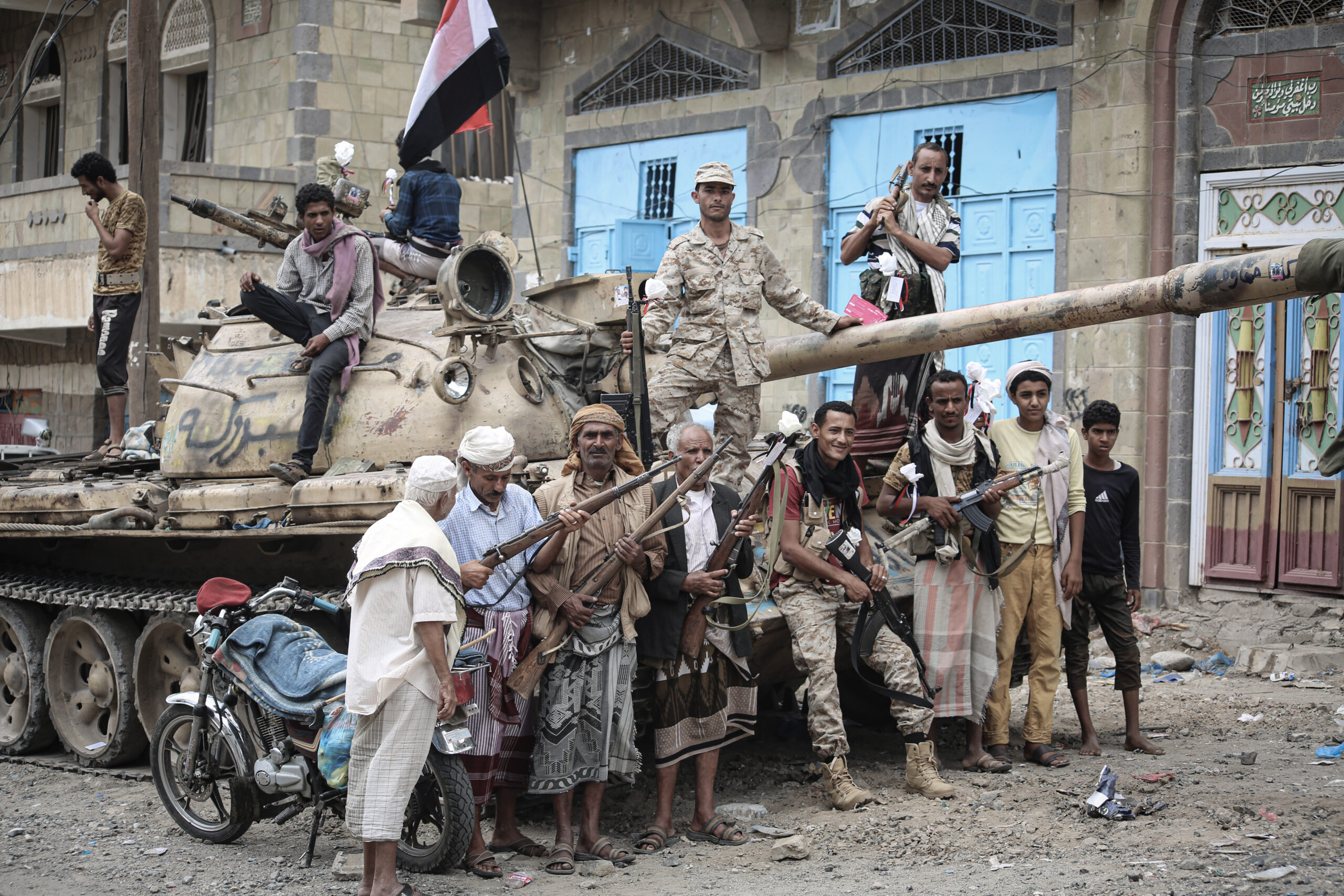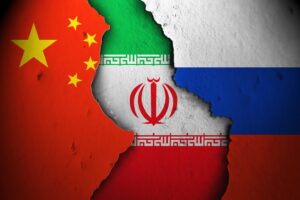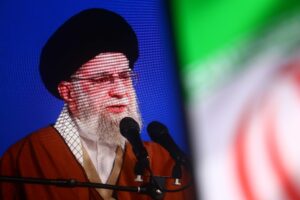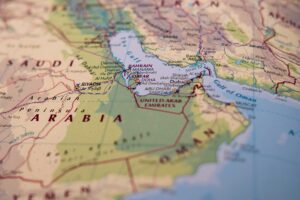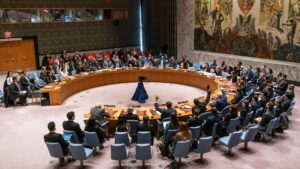Few failed to notice that progress in the efforts to end the war in Yemen followed shortly the news of the Saudi-Iranian agreement to reestablish diplomatic ties. Late in the month of Ramadan, a Saudi-Omani[i] delegation spent several days in Sanaa in what were characterized as constructive talks with further meetings scheduled to follow Eid al-Fitr celebrations. As a sign of the seriousness of the talks this time, the Red Cross completed a large prisoner exchange[ii] that included prominent captives, including former Defense Minister Mahmoud al-Subayhi, brother of former President Hadi, Nasser Mansour Hadi, and family relatives of Generals Ali Muhsin and Tareq Saleh. It would be a mistake, however, to view the Saudi-Iranian thaw as the cause of the developments in Yemen. Iran does not have a switch to turn the Houthi off and on; rather, the Saudi-Iranian agreements are motivated by the same factors that animate Saudi talks with the Houthi. Both the Saudi and the Iranian leaderships want to reduce costly regional tensions and refocus on domestic economic development, though a true reset in relations will be more allusive than the penning of agreements. In the Yemeni case, the Houthi are empowered, not weakened, by negotiations, and they may exploit Saudi Arabia and the international community’s desire for peace to win in negotiations what they failed to win on the battlefield.
A rocky start to negotiations
The Houthi claim to be the sole representative of Yemen and refuse to talk with the Yemeni government.
The Iranian-Saudi agreement is not the first of its kind between the two rivals. Saudi-Iranian relations oscillate between extreme hostility—the Saudi Embassy in Tehran has twice been sacked and burned, the last time after the execution of Shia religious leader al-Nimr by Saudi Arabia in 2016[iii]—and fragile agreements for coexistence in the region.[iv] While the contents of this agreement are confidential, the joint statement released by the Chinese government[v] declares that the two parties agree to implement the Security Cooperation Agreement of 17 April 2001. In other words, the agreement is to implement a two-decade-old agreement that was not originally put into effect. While both sides would like to refocus on domestic economic issues that require stability, the impact of a fragile thaw can easily be overstated. In terms of the Yemeni conflict, the Iranian foreign minister has been touring the region insisting that Iran’s support of the Axis of Resistance, which includes the Houthi in Yemen, will continue.[vi] Nevertheless, the Saudis are making contacts with all the organizations in the Axis of Resistance in the Arab world backed by Iran. The Saudi foreign minister visited Syria for the first time.[vii] What remains to be seen is whether the new air of negotiation and conciliation will bear fruit. In the Yemeni case, the Saudis may very much want to extricate themselves. The Saudis have always been and will always be involved in Yemen because the Saudis see Yemen as a security threat even without the Houthi, but Saudi involvement prior to 2015 was restricted mostly to subsidizing political patrons. In 2015, the Saudis shifted course and began a massive air campaign in support of Yemeni government forces to defeat the Houthi. The campaign backfired not only militarily by failing to dislodge the Houthi but also politically by allowing the Houthi to capitalize on Yemeni nationalist sentiment and opening the Saudis to international criticism for inflicting large-scale civilian suffering. The Saudis have spent tremendous sums on a wasted military campaign and now pay to prop up the economy in the areas controlled by the anti-Houthi forces in Yemen. These stubborn realities may prevent the Saudis from washing their hands of the Yemeni quagmire.
The most striking development in the Yemeni talks was the exclusion of the Yemeni government from the talks. Here Saudi and Houthi interests align to a certain extent, and therefore, Iranian pressure was unnecessary to initiate talks. The Houthi claim to be the sole representative of Yemen and refuse to talk with the Yemeni government. The Houthi frame the war as defense of the nation against foreign aggression. The Houthi are the Yemeni nation, and the Saudis and their American backers are the aggressors. The Yemeni government, in the eyes of the Houthi, are no more than puppets of the Saudis and Emiratis. The Saudis’ primary interest is securing their southern border with Yemen, regardless of who governs the country. The Saudis attacked the Houthi because they saw them as a threat to the Saudi border, but if the Houthi were willing to guarantee Saudi security, the Saudis would have no problem with Houthi dominance in Yemen. The Saudis have sought separate agreements with the Houthi to secure the Saudi frontier with Yemen in the past. As early as 2018, Saudi officials met directly with Houthi representatives in Oman with the Yemeni government, but talks quickly fell apart. [viii] The Saudi Houthi talks are more substantial this time, building on several years of back-and-forth proposals. But while Yemeni officials say they are “coordinating” with the Saudis in the talks, their exclusion indicates the Saudis are willing to deal with the Houthi. The Saudis did attempt to position themselves in Sanaa as mediators rather than a party to the talks and the Houthi reacted angrily, but the negotiations continued, nonetheless.
Without Saudi and Emirati backing of the Yemen government, the Houthi military is much better positioned to conquer all of Yemen.
The talks in Yemen focused on formalizing a de facto ceasefire, opening ports, airports, and domestic roads to all commercial traffic, the reunification of the Central Bank, and payment of public sector salaries. Talks also ranged beyond those immediate details to long-term solutions to the conflict, including the rebuilding of a single Yemeni state. But here the Saudis’ desire for stability may have led them to suspend disbelief in Houthi intentions. Houthi perfidy is the rule rather than the exception. In the ceasefire last year, the Saudi-Emirati coalition backing the Yemeni government complied with its agreements to allow flights from Sanaa and open Hodeida Port to all commercial goods[ix] not just essential commodities as in the past, but the Houthi never lifted their brutal siege of Taiz, a key demand of the Yemeni government. Today, Taiz remains under siege.
Speaking with CNN about the political future of Yemen, Houthi leader Mohammad al-Houthi declared: “If we were not looking for full control during the war, then we will not look for full control at any other time,”[x] implying that the Houthi will genuinely share political leadership in a post-conflict Yemen. For those following Yemeni affairs, his statement would be hilariously funny if it were not so horribly tragic. The Houthi tried with all their might to conquer all of Yemen beginning with the onslaught of Aden in the summer of 2015 and continuing with their sustained, brutal, and extremely costly yearlong campaign in 2021 to take Marib Governorate with its refinery and gas and oil reserves in the east. And significantly, it was with the intervention of the Emirati forces in Aden in 2015 that the Houthi forces were rolled back.[xi] In Marib, Saudi support for the Yemeni military[xii] finally broke the back of the Houthi offensive towards the east. Now, the Houthi demand[xiii] that foreign forces leave Yemen before any political agreement with the Yemeni government precisely because the Houthi know that Saudi and Emirati support is essential to the Yemeni government and its allies. Without Saudi and Emirati backing of the Yemen government, the Houthi military is much better positioned to conquer all of Yemen.
Vying for control over trade
The east is a main source of revenue for the Yemeni government, in addition to direct Saudi funding.
Following last year’s agreement to a ceasefire, the Houthi focused on economic coercion to gain what they could not on the battlefield[xiv]. The Houthi control the bulk of the Yemeni domestic market with about three quarters of the Yemeni population, but the Yemeni market is served by multiple ports, principally Aden and Hodeida but also Mukulla. Over the last year of de facto ceasefire, the Houthi sought to redirect[xv] all trade through Houthi-controlled Hodeida rather than Aden and Mukulla, which remain outside Houthi control. The Houthi used checkpoints to restrict overland commercial traffic and charge high taxes on the roads between Aden and Sanaa as well as Mukulla and Sanaa,[xvi] making Hodeida a more economical alternative for merchants. Redirecting commercial traffic denied the Yemeni Government tariff revenues and allowed the Houthi to negotiate directly with importers.
Unable to militarily conquer the oil fields in the east, the Houthi sent letters of warning to shipping companies[xvii] before exploding drones just beyond tankers approaching oil ports in southern Yemen, forcing the tankers to withdraw and effectively halt any oil exports from Yemen. Yemen’s national resources were being stolen, declared the Houthi. In the current negotiations, the Houthi demand that public sector salaries, including the military, be paid presumably in part with the oil revenues. Their demand is ironic. In 2018, Emirati-led forces approached[xviii] Hodeida Port from the south, having driven up the coast from Aden and threatening to deny the Houthi access to the sea. International pressure forced the Coalition to halt the campaign. The Americans and Europeans feared civilian casualties from an urban battle in the port city.[xix] However, the Yemeni government extracted a deal from the Houthi in which a special bank account was created for tariffs on oil imports through Hodeida to be used for the payment of public sector salaries.[xx] The Houthi did not comply; instead, oil revenues were used to finance the Houthi war machine. Houthi perfidy led the Saudis to cut oil imports into Hodeida for a time in 2021[xxi], which in turn led to international criticism of the Saudi blockade. Now, not only have the Houthi not paid salaries from oil revenues in Hodeida, but they also demand, and the Saudis seem ready to comply, that public sector salaries, the bulk of which are in Houthi territory, be paid at least in part with oil revenues from the east. The east is a main source of revenue for the Yemeni government, in addition to direct Saudi funding.
A financial system split into two
Unification of the Central Bank is an important step in rebuilding the Yemeni economy.
Unification of the Central Bank appears to be the next Houthi target. The Houthi inherited most of the Yemeni state, including its military, when it overthrew the Yemeni Government in late 2014, in large part because Ali Abdallah Saleh ordered those loyal to him to cooperate with the Houthi. The Houthi gradually replaced state personnel with their own loyalists.[xxii] Among those institutions were the Central Bank, which at the time of the Houthi coup, had four billion USD in foreign reserves. The reserves disappeared, and the Yemeni Government balked at sending state revenues from taxes and tariffs to Sanaa to finance Houthi war efforts. So, in April 2016, the Yemeni government established a new Central Bank[xxiii] in Aden and asserted fiscal sovereignty by printing new currency bills (Yemen is almost entirely a cash economy).
The Houthi retaliated by asserting their own sovereignty—effectively forbidding the circulation of the new currency bills in the areas under their control. Yemen split into two currency zones, a new bill zone and an old bill zone controlled by the Houthi. Of course, the new bill zone immediately saw inflation spiral because the new bills were meant to resupply the entire Yemeni economy, not the Government areas only. Today the new Yemeni Rial is worth half the old Yemeni Rial circulating in Houthi territories. The Adeni Central Bank is also strapped for foreign currency to finance Yemen’s imports, so the Saudis have made multiple-billion-dollar deposits to fight inflation and supply foreign currency for imports. (The Houthi relied upon international humanitarian assistance[xxiv] and imports coming from Yemeni government territory.) Yemen’s economic troubles may continue to haunt the Saudis for some time to come.
Unification of the Central Bank is an important step in rebuilding the Yemeni economy. However, the Houthi want to reunify the Bank in Sanaa, no doubt, while refusing to talk with the Yemeni government. Reunifying the Central Bank without a political settlement effectively gives the Houthi control over state revenues, fiscal policy, and monetary policy in all of Yemen.
Looking Forward
There remains a very long road to a substantive settlement
If Iran has pressured the Houthi to talk, there are not many signs of Houthi discomfort—the Houthi have given up little and appear to have everything to gain in these talks with the Saudis. The Saudis appear willing to suspend disbelief in Houthi fiction to extricate themselves from Yemen. Formally, the Saudi delegation met with the Yemen Presidential Leadership Council, the Yemeni government, to apprise it of the negotiations, and the head of the council, Rashad al-Alimi gave his support to the Saudi negotiations. However, those in the council and those living in its territory have no illusion about Houthi intentions and will find it very hard to agree to the terms the Houthi propose. Of course, negotiations are in their early phase, but given Houthi proposals to date, there remains a very long road to a substantive settlement.
[i] El Yaakoubi, Aziz. “Saudi, Omani envoys hold peace talks with Houthi leaders in Sanaa,” Reuters. 9 April 2023. https://www.reuters.com/world/middle-east/saudi-omani-delegations-arrive-sanaa-hold-talks-with-houthi-leader-2023-04-09/.
[ii] Reuters. “Yemen prisoner exchange begins amid peace talks,” Reuters. 14 April 2023. https://www.reuters.com/world/middle-east/yemen-prisoner-exchange-begins-icrc-2023-04-14/.
[iii] Hubbard, B., (2016). Iranian Protesters Ransack Saudi Embassy After the Execution of Shiite Cleric. The New York Times. Retrieved from https://www.nytimes.com/2016/01/03/world/middleeast/saudi-arabia-executes-47-sheikh-nimr-shiite-cleric.html.
[iv] Mabon, Simon. The Struggle for Supremacy in the Middle East: Saudi Arabia and Iran. Cambridge University Press, 2023.
[v] Ministry of Foreign Affairs of the People’s Republic of China. “Joint Statement by the People’s Republic of China, the Kingdom of Saudi Arabia, and the Islamic Republic of Iran.” (10 March 2023) https://www.fmprc.gov.cn/mfa_eng/wjdt_665385/2649_665393/202303/t20230311_11039241.html.
[vi] Keynoush, Banafsheh. “How Tehran Views the Iranian-Saudi Agreement.” Middle East Institute 24 March 2023. https://www.mei.edu/publications/how-tehran-views-iranian-saudi-agreement.
[vii] Alarabiya News. (2023). Saudi Arabia’s foreign minister arrives in Syria, meets with Assad. Retrieved from https://english.alarabiya.net/News/saudi-arabia/2023/04/18/Saudi-Arabia-s-foreign-minister-arrives-in-Syria-Al-Arabiya-.
[viii] Ghobari, Mohammad and Noah Browning. “Yemen’s Houthis and Saudi Arabia in secret talks to end war: sources.” Reuters. 15 March 2018. https://www.reuters.com/article/us-yemen-security-saudi-talks/yemens-houthis-and-saudi-arabia-in-secret-talks-to-end-war-sources-idUSKCN1GR27W
[ix] International Crisis Group. “A Moment of Truth for Yemen’s Truce.” 30 September 2022. https://www.crisisgroup.org/middle-east-north-africa/gulf-and-arabian-peninsula/yemen/moment-truth-yemens-truce.
[x] Ebraheem, Nadeen. “Houthis try to reassure skeptics they won’t seek full control of Yemen, as Saudis eye exit.” CNN, 14 April 2023. https://www.cnn.com/2023/04/14/middleeast/yemen-saudi-houthi-interview-mime-intl/index.html.
[xi] Knights, Michael. 25 Days to Aden: The Unknown Story of Arabian Elite Forces at War. London: Profile Editions. 2023.
[xii] Aljazeera. “Coalition ‘kills 160’ Yemen rebels as Marib battle intensifies.” AlJazeera. 17 Oct 2021. https://www.aljazeera.com/news/2021/10/17/coalition-says-killed-160-yemen-rebels-in-battle-for-marib.
[xiii] Ebrahim, Nadeen. “Houthis try to reassure skeptics they won’t seek full control of Yemen, as Saudis eye exit.” CNN. 17 April 2023. https://www.cnn.com/2023/04/14/middleeast/yemen-saudi-houthi-interview-mime-intl/index.html.
[xiv] Jalal, Ibrahim. “Under pressure: Houthis target Yemeni government with economic warfare.” Middle East Institute. 27 Feb 2023. https://www.mei.edu/publications/under-pressure-houthis-target-yemeni-government-economic-warfare.
[xv] Al-Batati, Saeed. “Houthis block Yemeni traders from using government-controlled ports.” Arab News. 13 February 2023. https://www.arabnews.com/node/2250526/middle-east.
[xvi] Saeed al-Batati. “Houthi Ban on Flour Imports Angers Yemeni Traders.” Arab News. 30 March 2023. https://www.arabnews.com/node/2278566/middle-east.
[xvii] Al-Batati, Saeed. “Yemen government slams Houthi threats to attack oil ships.” Arab News. 5 October 2022. https://www.arabnews.com/node/2175176/middle-east.
[xviii] AlJazeera. “Saudi-UAE alliance launches fresh offensive on Yemen’s Hodeidah.” AlJazeera. 18 Sept 2018. https://www.aljazeera.com/news/2018/9/18/saudi-uae-alliance-launches-fresh-offensive-on-yemens-hodeidah.
[xix] Labott, Elise and Ryan Browne. “US rejects UAE request for support to capture Yemeni port city.” CNN. 14 June 2018. https://www.cnn.com/2018/06/14/politics/us-port-city-yemen/index.html.
[xx] United Nations. “United Nations Mission to Support the Hudaydah Agreement.” https://unmha.unmissions.org/stockholm-agreement.
[xxi] United Nations Verification and Inspection Mechanism (UNVIM) for Yemen. “Operational Snapshot December 2021.” https://www.vimye.org/opsnapall.
[xxii] Rogers, Joshua. “Becoming the State: How Ansar Allah Took Over and Adapted Formal Institutions at the Local Level,” in Hamidaddin, Abdullah (ed). The Huthi Movement in Yemen: Ideology, Ambition and Security in the Arab Gulf. New York: I.B. Taurus, 2022.
[xxiii] Sana’a Center Economic Unit. “Bridging the Divide: Mitigating the Impacts of the CBY Schism on Yemen’s Banking Center.” Sanaa Center for Strategic Studies. 2 Mar 2023. https://sanaacenter.org/publications/analysis/19617
[xxiv] Vuylsteke, Sarah. “Flawed Data Continues to Plague Humanitarian Response in Yemen.” Sanaa Centre for Strategic Studies. 15 March 2022. https://sanaacenter.org/the-yemen-review/jan-feb-2022/17010; Elayah, M., Gaber, Q. & Fenttiman, M. From food to cash assistance: rethinking humanitarian aid in Yemen. Int J Humanitarian Action 7, 11 (2022). https://doi.org/10.1186/s41018-022-00119-w.

